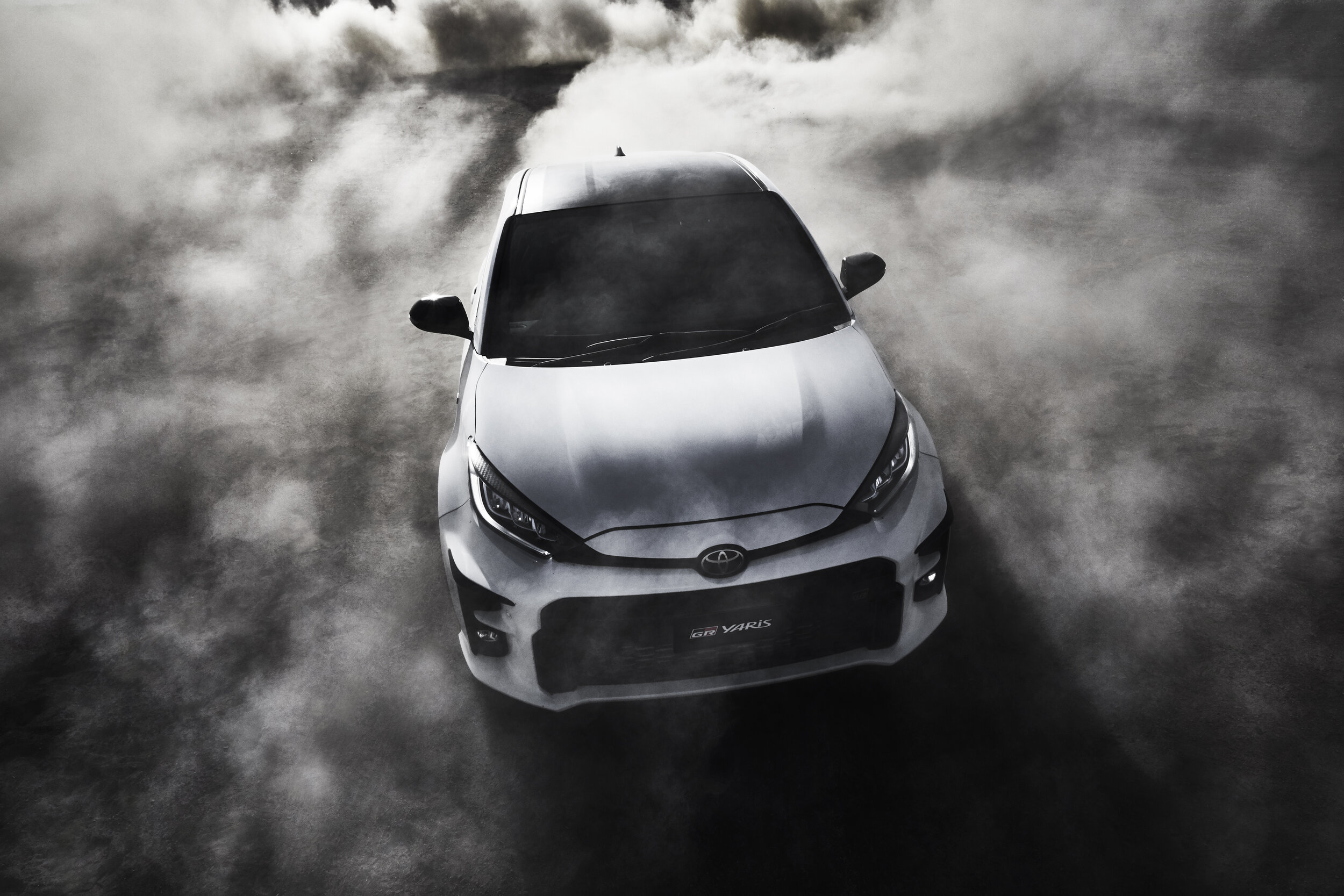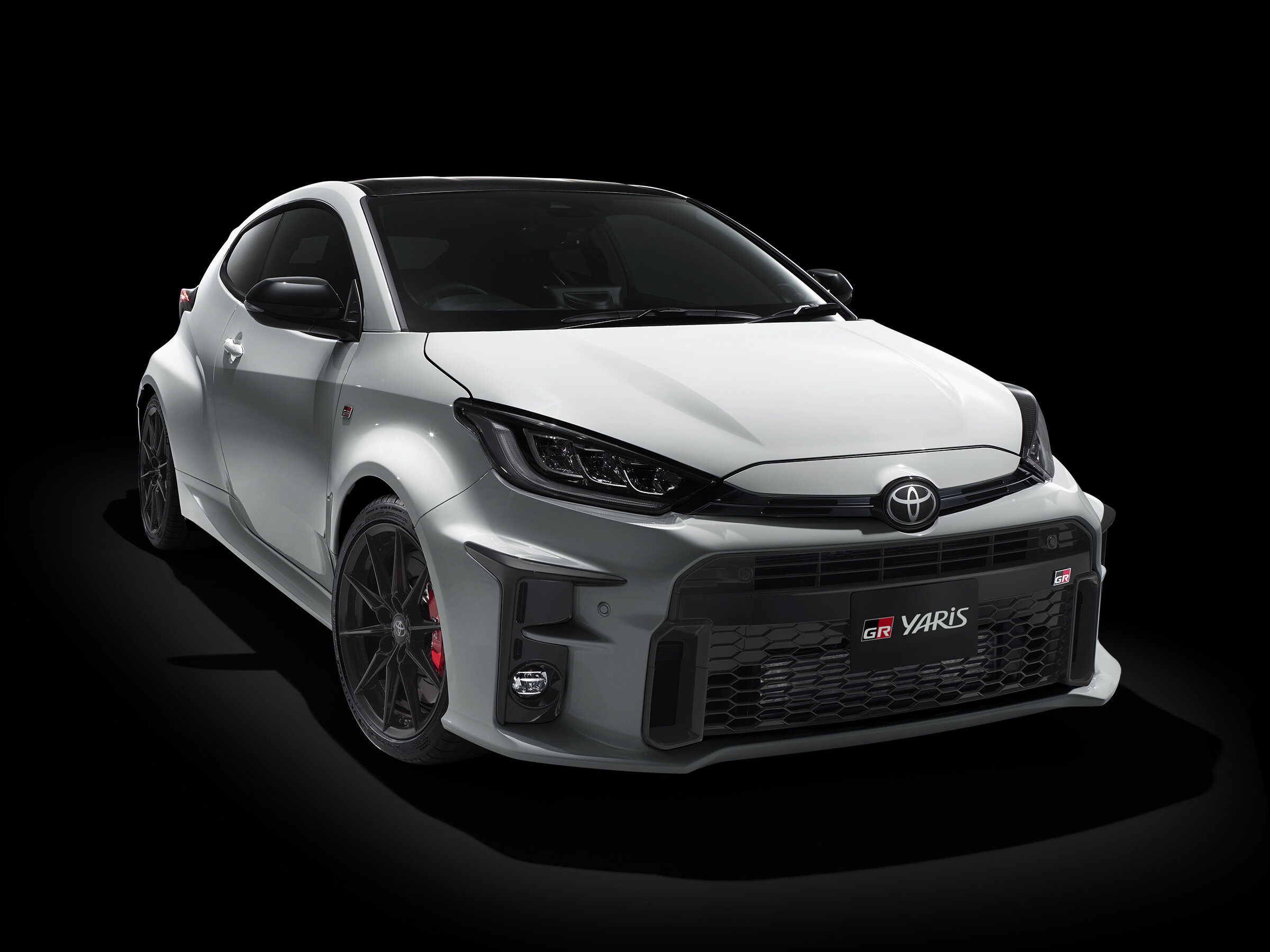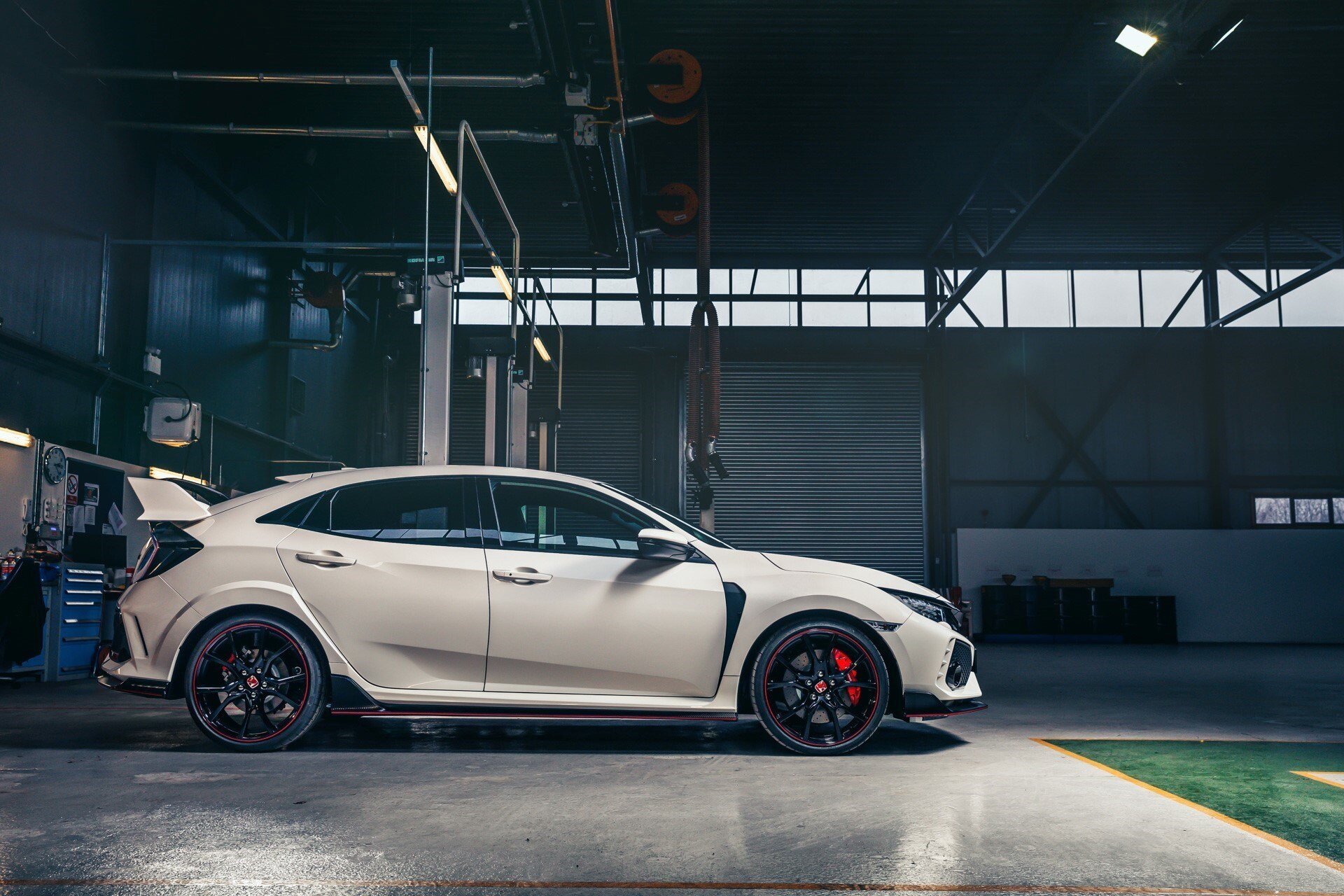Raptor revealed: Twin turbo, six-cylinders … and petrol
/Ford’s flagship now even more of a performance demon with adoption of US-sourced powerplant.
Read MoreFord’s flagship now even more of a performance demon with adoption of US-sourced powerplant.
Read MoreFinal shot edition delivers more power and a trick differential for AMG A45-matching spend.
Read More
TALK about landing in a whole heap of trouble … but potentially in good way.
Toyota New Zealand making public that its first hotshot hatch in ages, the Yaris GR, will start out as a $54,990 buy cements earlier signal from the Palmerston North-based marque that it plans to be a massive disrupter in this sector.
Effectively, the price puts the mighty midge bang in the middle of the action; it’ll square up against some tasty, established and well-credentialed rivals with similar performance, if not exactly alike for technical presentation, dimension or even door count.
Today’s story lists cars surely set to be considered competitors for the Gazoo Racing-prepped giant-killer. But first, a quick rundown on Toyota’s pint-sized pugilist.

GR Yaris.
THE second model is Toyota’s GR stable could well also be the smallest in that performance car sub-genre, but promises to be a heck of a firecracker nonetheless – and, despite being set to be in short supply to start with, ultimately surely has potential to make a bigger bang than the first model to bring Gazoo’s talent into NZ showrooms, the Supra.
Powered by a new 1.6-litre three-cylinder turbocharged engine developing 200kW of power and 360Nm of torque, for 0-100kmh in 5.5 seconds, it’s the only new Yaris variant with a three-door body design, a manual transmission (six-speed) and GR specific aero adornments, suspension, drivetrain and braking hardware.
Two ideals drive this 1280kg car. It’s another Toyota out to reset public perception about the brand; Japan HQ, under its new leadership, has realised reliability’ only works so well as a sales tool. It now needs to re-install the fun element as well. This promises to have an extra-large personality. Yes, being a Yaris makes it smaller than every other hot hatch in this sphere, but assuredly it should go so big in other ways to offset thinking about tighter size being a drawback.
One big draw is that it comes with a motorsport background. The car obviously presents opportunity establish a link with Toyota’s rising dominance of the World Rally Championship with the Yaris. In this respect, the GR is more than just about street image and reflected glories from the current WRC weapon. It is actually the basis of the present type’s replacement, being an official homologation model for the one that’ll start competing from next year.
Indeed, as rally-keen colleague and MotoringNZ contributor Colin Smith has noted, the GT road car will arrive with all the attributes required for owners looking to compete successfully in local rally competitions. Anyway, this explains the lowered roofline, widened track, trick suspension, very clever all-wheel-drive, huge brakes and advanced aerodynamics.
Keen to buy in? You might already be too late for the initial consignment. Yaris GR is basically hand-built in Japan, ‘takumi’ (basically, artisan assemblers) working on on a special line in the Motomachi factory, and is in high demand in every country it will be offered to. New Zealand was originally promised just five examples for 2020, but after receiving orders for four times that many, has been able to wangle a larger consignment. Assuredly, though, it’ll be fewer cars than it can sell and that situation is unlikely to clear up until next year.
So, anyway, what else is in the running at or around this money?

Ford Focus ST
LAST week’s test reminded that New Zealand’s association with fast Focuses/Focii has been a wild ride through history. It also reminded that everything became all the more exciting when Ford doubled the mix; keeping a front-drive firework – with ST badging - but also offering a more honed higher-tier RS that, by adding in the ingredients of four-wheel-drive, tricky differentials and even more explosive power really shook things up.
In pure ingredient, the latter would be more a foil for the GR, but that’s semantics now, because only the ST has made into production this time. It lacks the skills and sheer wallop to stand as an RS replacement, but still comes across as a great plaything. That 206kW and 420Nm 2.3-litre has heaps of character and the new automated manual will broaden its appeal.
Still, as much as last week’s test cited it as the best ST yet, overall conclusion was the car could be better: The slightly cheap ambience for the money is a pity and while the transmission’s operability is fine, presentation is not brilliant, with the sports modes being more complex than they need to be.

Hyundai i30 N
You know how Hyundai cooked up the N: Created an i30 hatch as a VW Golf GTi competitor, poaching Albert Biermann, then head of BMW’s M Division, and his crew to ensure the job was done right.
It was all so worthwhile. Hyundai’s hottie is a fantastic car that’s also the only one here to be exact-priced against the GR.
You’re probably also aware there’s now also an Nth degree N in the $4000-dearer Fastback; every bit as ferociously fast and feral, yet more finessed and, of course, more functional in delivering as a five-door hatch whereas the still available original is a three-door.
Both are awesome. With 202kW and 353Nm, Hyundai’s 2.0-litre isn’t the most fiery offer in this sector, but it has brilliant flexibility and it is fun.
Yet there are drawbacks are clearly containing consumer excitement, unfortunately. It’s stuck in the same niche that might yet bog down the Yaris in being manual only but also suffers perhaps for a lack of visual excitement. Hyundai also runs in the WRC, of course, and yet as much as this car could leverage off the brilliant results from the i20 WRC – plus, of course, the Hayden Paddon association – fact is, it doesn’t. Indeed, Hyundai NZ really doesn’t do much to remind that it has this marvellous model in its ranks.

Honda Civic Type R
Again, slightly more expensive that the Toyota, with the standard model sitting just $10 under $60k and this year’s Mugen-enhanced (if only in bodykit) version another $5000 above that, the Civic probably still rates as as contender simply because it’s also a Japanese berserker whose extreme character isn’t just expressed by its grunt but also the packaging. The whole look is an outrageous origami that really polarises.
Honda isn’t kidding in calling it a car kitted to meet the thrill of driving. But wow, there are no half measures here. The car has a ton of go, no argument, and the 228kW/400Nm 2.0-litre’s effervescence is enthralling, but among everything here today, it’s the one that asks most of its driver in order to entertain. You’ve really got to stir that manual six-speed to make it work. Get into the zone and it is stunning … but it’s almost too race car for its own good: The ride is very rigid and even the seat design is unremitting.

Renault Megane RS
A shift from three to five-doors and three pedals to two might have stunned some fans, but overall it’s been a sensible shock. A more family-friendly shape, a more convenient transmission with the six-speed EDC, even if this dual-clutch tranny isn’t quite as good as the Volkswagen direct-shift gearbox whose consumer favouritism compelled Renault to follow suit. When the EDC car came on test, there was still a manual on offer, for $3k less than the $62,990 sticker attached to the press model.
The sheer Frenchness of the recipe will cause some to hold back and, as much as the new body shape offers greater convenience, it just doesn’t look as chic as the previous edition. What it has in common with the Yaris is a rarity factor. Few are sold, so if you see one, it commands attention.

Subaru WRX Saigo
Just announced today, it’s the final version of the current WRX (Saigo is Japanese for ‘last’).
Subariu NZ is trying to rev up enthusiasm by calling it “an exceptionally limited, limited-edition collector’s car” however, really, that’s sounds a bit tenuous, regardless just 18 are heading this way.
Why? Well, for one, ‘last’ doesn’t mean last of the kind … it’s more accurate to call it the final special edition. Subaru NZ has acknowledged the ‘regular’ WRX is actually going to be available here until well into next year.
Also, it’s really just a dress-up; no additional performance is promised, which is a bit of a shame. Everything additional is for show rather than go and of these the best bits – 18 inch STI wheels and red Brembo brakes – are restricted to the manual version, otherwise the additions of value amount to a Harmon Kardon stereo and Recaro seats. Nice to have, and the body trim enhancements are nicely done, but as a collector’s item, it’s not exactly at 22B level, right?
On top of this, the current generation WRX arguably hasn’t been one the true greats anyway; though in fairness no modern WRX has really felt as resolved as those produced in the era of WRC involvement. The car has become better for road driving since it hung up its helmet, no argument, and the all-wheel-drive ingredient is a cool vibe, it’s also lacked a certain edginess, particularly when the Lineartronic CVT is optioned over the six-speed manual. It nowadays struggles on stonk (197kW and 350Nm) plus it’s starting to date in look. Still, at $55,990 in this new trim it’s in the zone.

Volkswagen Golf GTI
Also in its final year of production, with a replacement already on the road in Europe and destined for introduction here in 2021, the GTI nonetheless rates consideration simply because it has been the car that has set the standard in this scene for so long.
VW NZ is keeping the type on the boil with an exciting final blow-out TCR edition (above) that primarily attracts through having extra 44kW additional power over standard plus 235/35 rubber on 19 inch rims and an enhanced trim level, but realistically at $65,990 it’s less likely to be considered a GR competitor than the standard GTI, which starts at $56,990 and, though ‘only’ making 169kW, has the same 350Nm torque as the race-inspired special and, based on all past experience, will be just as much fun on a challenging road.
Sure, we’re talking front-drive, of course, but the chassis is sweet and that six-speed DSG is the box all others tend to be measured against. Though it’s not really playing the same game as the GR, fact is that established cred alone makes a GTI hard to turn down.

Will an underdog be accepted as king of the kennel?
More specifically, can a 206kW front-drive hot hatch fill the boots of a far more hyperactive four-wheel-drive big brother that, in the final tuning of its previous format presented to New Zealand, generated 257kW and smashed 0-100kmh in 4.7 seconds?
As hard as it might be for some revheads to accept the Focus ST incoming to New Zealand in June, price and final specification still undisclosed (and Covid-19 notwithstanding), having the cojones to satisfy RS-level expectations, that’s exactly what is going to happen, with news that the latter Focus has been killed off.
Ford New Zealand is pulling on its brave pants in responding to thought that, with the RS gone, it might lose a fanbase and struggle with ST to maintain the traction RS gained as an ultimate Euro-flavoured Blue Oval bad boy.
Corporate communications manager Tom Clancy believes the ST has enough flavour to win at least a look from the RS fanbase.
“The initial reviews from Europe of the … ST have been highly positive so we will see some RS customers and hot hatch enthusiasts in general checking out the new Focus ST.”
Ford has left those hardcore addicts no choice, with news that a famous badge with lineage going back to early Escorts now ends with $76,990 RS Limited Edition that came here in September of 2018.

The idea of developing a fourth generation RS hinged on it working with what’s turned out to be a developmental dead-end – a high-output hybrid turbo four-cylinder engine and an emissions-reducing 48V mild-hybrid system to meet tighter CO2 targets while retaining ballistic capability.
A company statement reads: “As a result of pan-European emissions standards, increased CO2 taxation and the high cost of developing an RS with some form of electrification for a relatively low volume of vehicles, we are not planning another RS version of the Focus.”
This doesn’t necessarily mean the RS will not re-emerge in the future – the statement is careful to apply specifically to this generation Focus – yet it does mean that for the time being the onus of being the ultimate family funster falls on a variant that, until now, has always been a stepping stone between the mainstream and the fully malevolent formats.
The new ST is certainly set to be a faster, more honed car than its predecessor. Notably, it comes equipped with a 206kW/420Nm 2.3-litre four-pot turbo – up by 22kW and 60Nm over the old model.
That means it is offering just 20Nm less than the last RS in its hottest factory format, though the power output is also 49kW shy.
It is also surely set to win a wider audience than the previous ST, or any RS, as they were manual gearbox models, whereas the next transfers to a seven-speed direct shift transmission.
Says Clancy: “The RS was more suited to enthusiasts as was the previous Focus ST.

“Where we anticipate the largest customer interest/movement is from the fact that this is the first time we’ve offered a 7-speed automatic transmission with paddle shift in a Focus ST.
“We anticipate many new customers and customers coming from competitors who have had autos before the Focus ST.”
However, the ST is patently not on the same level as the last RS in respect to drivetrain tech, which stands to reason.
In production and on sale in its primary markets for almost a year, ST was developed at a time when Ford was committed to doing as it has previously done: Continuing it as a fun, but lower-tier, excitement than the RS which was – back then – was a definite starter.
Which is why the RS alone had the full-out race-spec tech and aimed at utterly bonkers high-end specialist all-wheel-drive Euro fare – the likes of the Audi RS3 and Mercedes A35 and A45 - whereas the ST was designed more as a foil to front-drive hotties, most notably the Renault Megane RS and the VW Golf GTI.
The RS will certainly be remembered as a marvel of chassis technology and sheer aggression.
As other have noted, it’s been no stranger to variety. The first-generation car relied on turbocharged, 2.0-litre power sending drive to the front axle; the second also put power through the steering set and switched to a five-cylinder unit. The previous Focus RS returned to four-cylinder power, but adopted an all-wheel-drive system and lifted the game all the more.

Huge grunt from a 2.3-litre turbo engine (with 1.8bar or 26PSI of turbo boost) channelled via a six-speed manual gearbox and, in most-prized Limited form, a Quaife mechanical (meaning real, not a pretend electronic approximation) limited-slip differential at the front and it had a RS Performance Wheel Pack with 19-inch rims and Michelin Pilot Sport Cup rubber. All this, and a fun-tastic Drift Mode that unleashed it for impressively Hoonigan-style big skids (track use only, of course).
That clever stuff showed in the price, of course. At $76,990, that last blast RS added $4000 to the sticker attached to the standard model and left it around $25k above the ST.
So much for so little? As much as the RS sticker seemed to put it beyond the faint-hearted, it sold fast anyway.
And though, of course, the RS car park was always smaller than the ST’s, which in itself held something of a niche presence, it proved how strongly street cred can ‘sell’ a car, being utterly untroubled being noticed by those in the know.
MotoringNZ reviews new cars and keeps readers up-to-date with the latest developments on the auto industry. All the major brands are represented. The site is owned and edited by New Zealand motoring journalist Richard Bosselman.